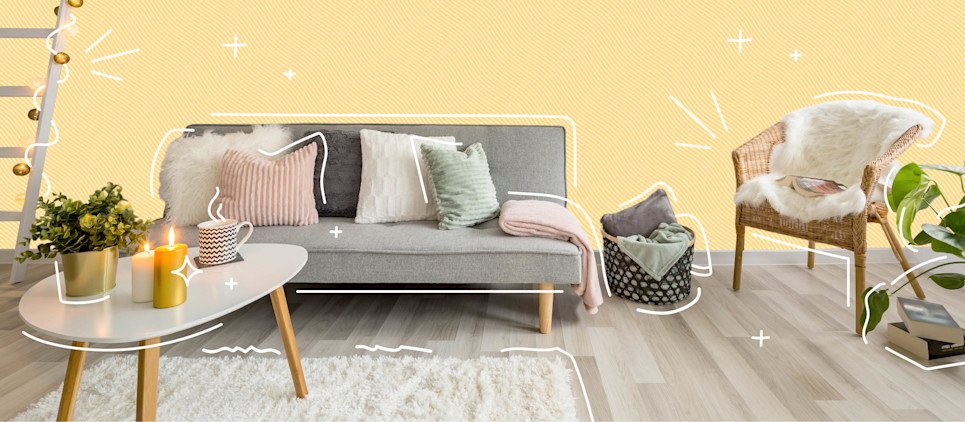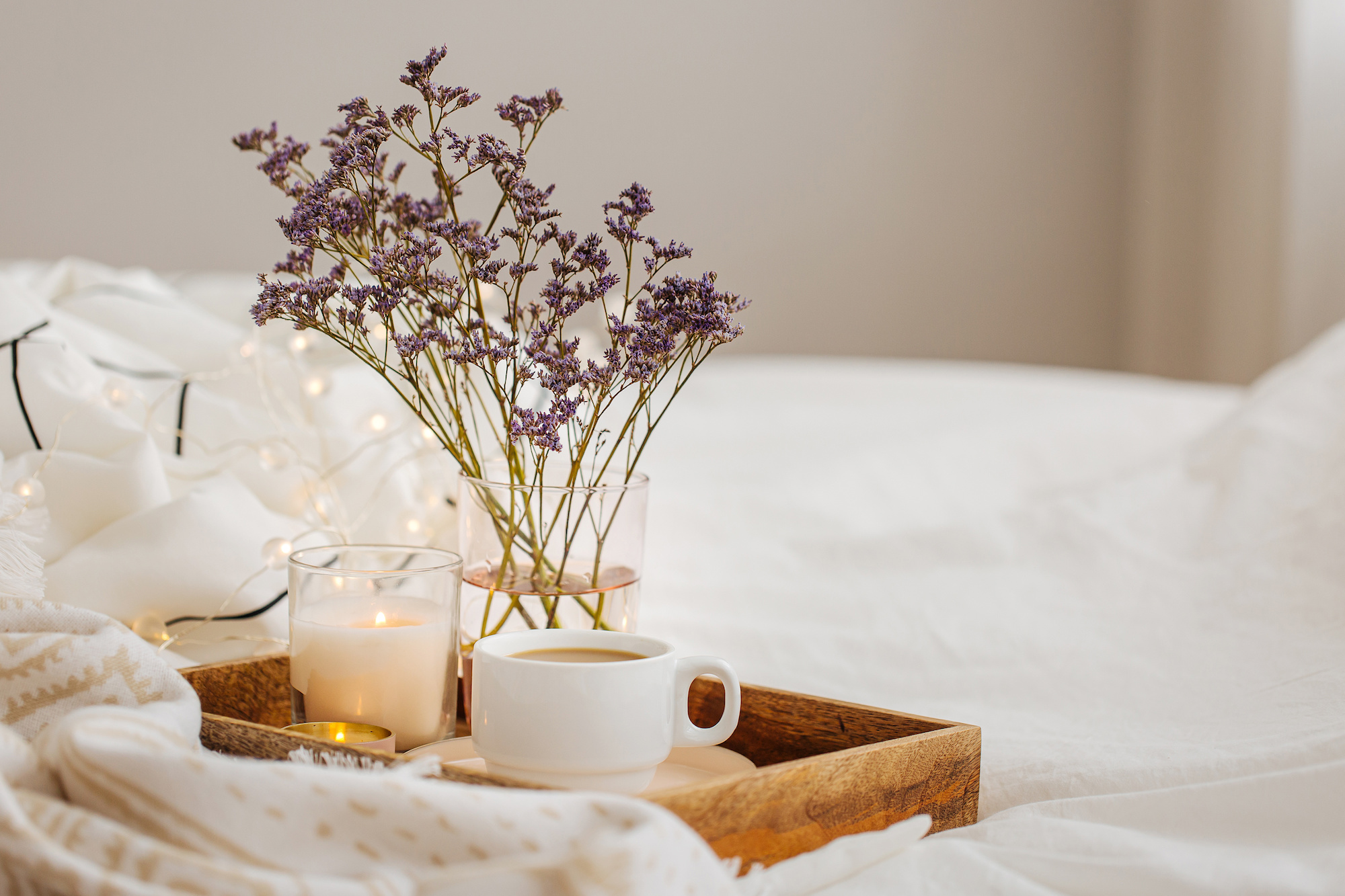All about hygge: Learn how to enjoy Danish-style coziness and conviviality at home
If you’ve got a finger on the pulse of the latest lifestyle trends—or even if you don’t—you’ve probably heard the term hygge, a Danish concept for which we have no perfect English word, though “cozy” might be a close approximation. A proliferation of products, articles, and books about the Danes’ expertise in the art of living comfortably, most notably The Little Book of Hygge, by Meik Wiking, the founder of the Happiness Research Institute in Copenhagen caught on quickly with an international audience.
While hygge’s heyday in American lifestyle media may have passed, the COVID-19 pandemic and its resulting stay-at-home orders have made our need for hygge more relevant than ever. So what is hygge, and how can one cultivate it, practice it, and embody it?

Table of contents
What does “hygge” actually mean?What is and isn’t hygge?3 Ideas to hygge at home with your roommatesWhat does “hygge” actually mean?
Hygge, pronounced hoo gah, can be used as a noun or a verb, and best described as a feeling of comfortable conviviality in a warm atmosphere that “promotes wellbeing.” Hygge applies to both social and individual settings—it’s about being comfortable alone or together with others. Most importantly, hygge is about being offline. Screens are the antithesis of hygge.
Hygge is often credited for Denmark’s #2 spot on the Happiness Research Institute’s 2017-2019 ranking of the world’s happiest countries. The concept of hygge is primarily associated with Denmark and is usually cited as part of the country’s soul, or an explanation for how people who live in such a wintry climate for much of the year can stay so fulfilled.
While the Danes popularized the term, the concept of hygge isn’t inherently Danish. In fact, the Danish word hygge is derived from an old-fashioned Norwegian word that meant something along the lines of “well-being.” And its spirit can be found around the globe—anyone familiar with Judaism, for example, might recognize hygge as a sort of secular Shabbat that isn’t limited to the weekend.
What is and isn’t hygge?
Like any widespread trend, hygge has drawn criticism from those seeking to defend its roots. While American stores often brand cozy socks, sweet coffee mugs, and candles as “hygge” in an effort to capitalize on the trend, some Danes haven’t been shy when pointing out that hygge is not about buying things—in fact, it’s quite the opposite.
Hygge isn’t just about the vibe of your decor or even limited to winter. It’s about a feeling. Hygge could be an outdoor activity or look totally ugly, as long as what you’re doing leaves you feeling like you just got a big hug from someone who accepts you just the way you are. Let’s take a look at some examples of things and activities that are and are not hygge.
Lying in bed scrolling social media: Not hygge.
While hygge is about being cozy at home, there’s a fine line between hygge and lounging. A key component of hygge is connection with the self and others, and mindless scrolling doesn’t quite fit the bill.
Time with friends and family: Hygge.
Nurturing one’s close relationships over mulled wine, a picnic, a board game, or a movie is perhaps the most hygge thing of all. If you’ve ever spent time with friends and left feeling like you’re still wrapped in a hug, that’s hygge.
Getting dressed: Not hygge.
There’s a Danish word for those perfectly-aged sweatpants you’ve been wearing since college: hyggebukser. While practicing hygge, it is paramount that one not care about the appearance of one’s pants, or give much thought to any other sartorial choices.
Curling up with a good book: Hygge.
Offline activities that make you want to snuggle deeper into that blanket are totally hygge. Think books, magazines, board games, and spending the whole day cooking something warm.
A juice cleanse: Not hygge.
Hygge is also about indulging in good food—but not going overboard. Stewing mulled wine, hot cocoa, or stew on the stove, then taking your time eating and drinking with your loved ones, is at the heart of the hygge lifestyle.
A picnic in the park: Still hygge!
Hygge has become synonymous with winter, due to the weather in Scandinavia. But hygge is a year-round concept! Park hangs, lounging on a beach with a book and some friends, or taking a nature walk are all hygge, too.

3 Ideas to hygge at home with your roommates
How can you channel hygge in your everyday life? It’s about more than buying candles and blankets (although it’s always fun to have an excuse to do so). The only rule? Take it easy and come as you are.
Cook dinner together. Even if you don’t know your roommates well, spending time cooking something new together can help you become friends as well as roommates. Find a few recipes, throw on your sweats, and fire up the stove.
Have a game night. If you haven’t busted out the board games since childhood, what are you waiting for? Group games like Codenames, Settlers of Catan, and Cards Against Humanity are all great icebreakers for roommates who are just getting to know each other, or ways to bond further with your close friends.
Get crafty. Spending an afternoon snipping paper snowflakes at the kitchen table, hand-crafting holiday cards, or making art for the walls of your shared living room are great ways to hygge. You’re together, you’re off your phone, you’re cozy at home, and you’re making your home and life even cozier in the process.
Hygge is more than a lifestyle trend. It’s a philosophy. In a world characterized by a 24-hour news cycle, remote work, and social media FOMO, what more could we need than a reason to relax indoors free from obligation or judgment? So light those candles, dig out your coziest blankets, and pour yourself a hot mug of tea. Happy hygge-ing!
Bungalow is the best way to live with roommates. We offer private rooms in shared homes that are more affordable than living alone in the same neighborhood. Common areas come furnished, and wifi, utilities, and monthly cleaning are all set up when you move in so that coliving is seamless. Find a Bungalow near you.
Ready to find your next home?
Move-in ready homes and a built-in community so you can feel at home, together — wherever you are.
Suggested articles



